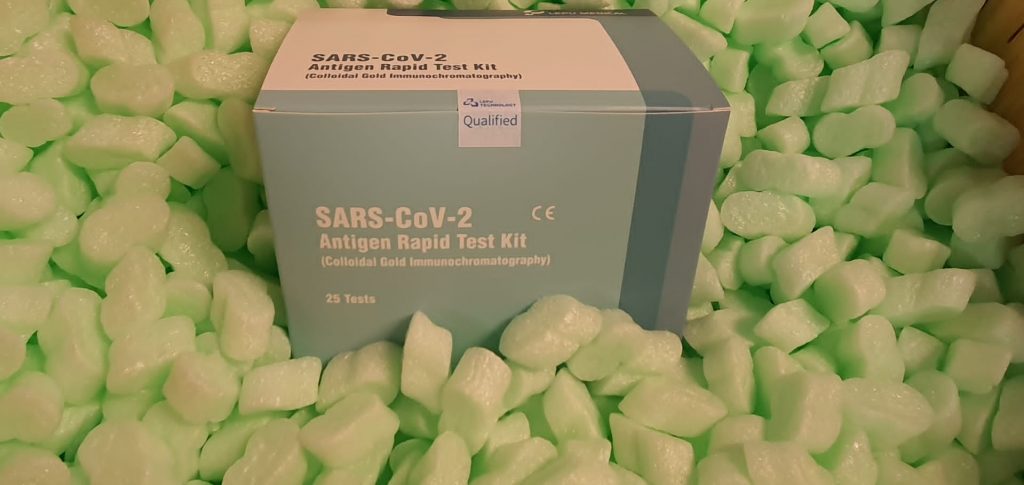Although, in routine apply, the differential diagnostics of mesenchymal tumors of the gastrointestinal tract remains to be centered primarily on the appropriate prognosis of gastrointestinal stromal tumor and its additional therapeutic administration primarily based on predictive diagnostics, current progress in the improvement of endoscopic methods has led to elevated detection of different mesenchymal lesions, which had been beforehand generally uncared for attributable to their small measurement or absence of signs requiring surgical exploration. Diagnosis of some of these lesions could also be reached primarily based on their histologic sample alone, whereas others could also be acknowledged with the use of tissue particular antibodies associated to the possible lineage of differentiation of the neoplastic cells.
Finally, a subset of tumors, generally with unsure lineage of differentiation, is outlined by pathognomonic genetic alterations of neoplastic cells. Recognition of such alterations, primarily based both on strategies of molecular genetics or immunohistochemical detection of an altered protein product, allows a exact prognosis in a rising quantity of these circumstances. However, relating to the truth that almost all of these alterations aren’t distinctive to a single tumor kind, however are sometimes shared by extra neoplastic entities, the prognosis should nonetheless be primarily based on a fancy diagnostic perspective, reflecting histological, immunohistochemical and molecular genetic options of the investigated tumor.
Two centuries from species discovery to diagnostic characters: molecular and morphological proof for narrower species limits in the widespread SW Australian Anarthria gracilis advanced (Restionaceae s.l./Anarthriaceae, Poales)
The excessive southwest of Australia is a biodiversity hotspot area that has a Mediterranean-type local weather and quite a few endemic plant and animal species, many of which stay to be correctly delimited. We refine species limits in Anarthria, a Western Australian endemic genus characterised by the incidence of the biggest quantity of plesiomorphic character states in the restiid clade of Poales. In distinction to many different teams of wind-pollinated Australian Poales, Anarthria was historically seen as having well-established species limits. All six at present recognised species, that are conspicuous members of some Western Australian plant communities, had been described in the first half of the 19th century.
They are historically distinguished from one another primarily utilizing quantitative characters.
<sturdy class=”sub-title”> Methods: </sturdy> We examined in depth current herbarium specimens and made new collections of <i>Anarthria</i> in nature. Scanning electron microscopy and mild microscopy had been used to review leaf micromorphology. Molecular range of <i>Anarthria</i> was examined utilizing a plastid (<i>trn</i>L-F) and a low-copy nuclear marker (<i>at</i>103). This is the first examine of species-level molecular range in the restiid clade utilizing a nuclear marker.
Material traditionally labeled as Anarthria gracilis R.Br. really belongs to a few distinct species, A. gracilis s.str., A. grandiflora Nees and A. dioica (Steud.) C.I.Fomichev, every of which varieties a well-supported clade in phylogenetic analyses. Both segregate species had been described in the first half of the 19th century however not recognised as such in subsequent taxonomic accounts. Anarthria dioica was first collected in 1826, then wrongly interpreted as a species of Juncus (Juncaceae) and described as Juncus dioicus. We present a proper switch of the identify to Anarthria and for the first time report its clear and qualitative diagnostic characters: a particularly quick leaf ligule and distinctive sample of leaf epidermal micromorphology.
An extended ligule is current in A. gracilis s.str. and A. grandiflora. These species differ from one another in leaf lamina morphology and anatomy and have principally non-overlapping distribution ranges. The narrower definition of species gives a foundation for future phylogeographic analyses in Anarthria. Our examine highlights a necessity for extra in depth use of nuclear DNA markers in Restionaceae. The use of the low copy nuclear marker atAnarthria to be recognised. The ligule character is used right here for the first time in the taxonomy of Anarthria and deserves particular consideration in research of different restiids. In common, our examine uncovered a superficially hidden however, in actuality, conspicuous range in a standard group of wind-pollinated vegetation in the southwest of Western Australia.

Performance of Three Commercial Molecular Diagnostic Assays for the Simultaneous Detection of Mycoplasma genitalium and Macrolide Resistance
The growing frequency of macrolide resistance is an rising concern in the therapy of Mycoplasma genitalium an infection. Because analysis of new industrial package detecting M. genitalium and macrolide resistance is required, we evaluated the efficiency and dealing with traits of the Allplex MG & AziR (Seegene), the Macrolide-R/MG ELITe MGB (ELITechGroup), and the ResistancePlus MG FleXible kits (SpeeDx-Cepheid) in comparability with an in-house real-time PCR and 23S rRNA gene sequencing used as reference. A complete of 97 specimens had been discovered M. genitalium-positive with the three kits and had been used to evaluate macrolide resistance detection.
A complete of 239 urogenital specimens (135 M. genitalium-positive and 104 M. genitalium-negative specimens) collected between April and December 2019 at the French National Reference Center for bacterial Sexually Transmitted Infections had been assessed.The general settlement for M. genitalium detection of the three industrial kits in contrast with the in-house real-time PCR was 94.6-97.6%, and there was no important distinction. The scientific sensitivity for resistance detection was 74.5% (95% confidence interval 61.7-84.2%), 96.2% (87.2-99.0%), and 92.8% (82.7-97.1%) for the Allplex MG & AziR, Macrolide-R/MG ELITe MGB, and ResistancePlusMG FleXible kits, respectively.
-Sucrose (Molecular Biology Grade)) D(+)-Sucrose (Molecular Biology Grade) |
|
CE224 |
GeneOn |
500 g |
EUR 67.2 |
-Sucrose (Molecular Biology Grade)) D(+)-Sucrose (Molecular Biology Grade) |
|
CE225 |
GeneOn |
1 kg |
EUR 84 |
-Sucrose (Molecular Biology Grade)) D(+)-Sucrose (Molecular Biology Grade) |
|
CE226 |
GeneOn |
5 kg |
EUR 207.6 |
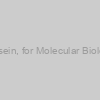 Casein, for Molecular Biology |
|
MB279-100G |
EWC Diagnostics |
1 unit |
EUR 110.77 |
|
Description: Casein, for Molecular Biology |
 Casein, for Molecular Biology |
|
MB279-500G |
EWC Diagnostics |
1 unit |
EUR 387.65 |
|
Description: Casein, for Molecular Biology |
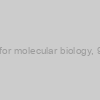 Urea for molecular biology, 99.5% |
|
21113 |
Sisco Laboratories |
500 Gms |
EUR 6.5 |
|
|
|
Description: Part A |
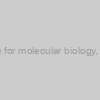 Xylene for molecular biology, 99.5% |
|
45122 |
Sisco Laboratories |
250 ml |
EUR 2.81 |
|
|
|
Description: Part A |
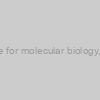 Acetone for molecular biology, 99.8% |
|
27498 |
Sisco Laboratories |
500 ml |
EUR 3.76 |
|
|
|
Description: Part A |
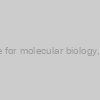 Glycine for molecular biology, 99.5% |
|
64072 |
Sisco Laboratories |
100 Gms |
EUR 1.64 |
|
|
|
Description: Part A |
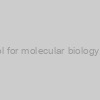 Carbinol for molecular biology, 99.5% |
|
34883 |
Sisco Laboratories |
500 ml |
EUR 6.23 |
|
|
|
Description: Part A |
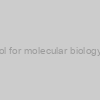 Methanol for molecular biology, 99.5% |
|
96446 |
Sisco Laboratories |
500 ml |
EUR 6.23 |
|
|
|
Description: Part A |
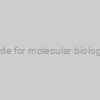 Formamide for molecular biology, 99.5% |
|
30349 |
Sisco Laboratories |
500 ml |
EUR 5.82 |
|
|
|
Description: Part A |
 Imidazole for molecular biology, 99.5% |
|
61510 |
Sisco Laboratories |
25 Gms |
EUR 5.47 |
|
|
|
Description: Part A |
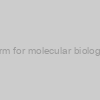 Chloroform for molecular biology, 99.8% |
|
96764 |
Sisco Laboratories |
100 ml |
EUR 3.08 |
|
|
|
Description: Part A |
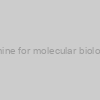 Triethylamine for molecular biology, 99.5% |
|
55221 |
Sisco Laboratories |
500 ml |
EUR 4.11 |
|
|
|
Description: Part A |
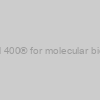 Ficoll 400® for molecular biology |
|
45460 |
Sisco Laboratories |
5 Gms |
EUR 15.6 |
|
|
|
Description: Part B |
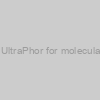 Agarose UltraPhor for molecular biology |
|
27813 |
Sisco Laboratories |
10 Gms |
EUR 46.5 |
|
|
|
Description: Part B |
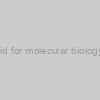 Boric Acid for molecular biology, 99.5% |
|
22311 |
Sisco Laboratories |
250 Gms |
EUR 4.04 |
|
|
|
Description: Part A |
 2-Mercaptoethanol ?For Molecular Biology |
|
MB041-100ML |
EWC Diagnostics |
1 unit |
EUR 9.02 |
|
Description: 2-Mercaptoethanol ?For Molecular Biology |
 2-Mercaptoethanol ?For Molecular Biology |
|
MB041-500ML |
EWC Diagnostics |
1 unit |
EUR 26.47 |
|
Description: 2-Mercaptoethanol ?For Molecular Biology |
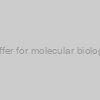 ACES Buffer for molecular biology, 99.5% |
|
27907 |
Sisco Laboratories |
5 Gms |
EUR 5.4 |
|
|
|
Description: Part B |
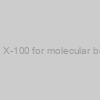 Triton X-100 for molecular biology |
|
64518 |
Sisco Laboratories |
100 ml |
EUR 6.02 |
|
|
|
Description: Part A |
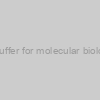 MOPS Buffer for molecular biology, 99% |
|
66043 |
Sisco Laboratories |
25 Gms |
EUR 10.28 |
|
|
|
Description: Part B |
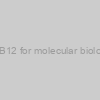 Vitamin B12 for molecular biology, 97% |
|
77472 |
Sisco Laboratories |
250 Mg |
EUR 5.78 |
|
|
|
Description: Part B |
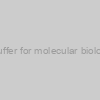 HEPES Buffer for molecular biology, 99.5% |
|
16826 |
Sisco Laboratories |
25 Gms |
EUR 6.3 |
|
|
|
Description: Part B |
 Sodium Azide for molecular biology, 99% |
|
17782 |
Sisco Laboratories |
100 Gms |
EUR 5.47 |
|
|
|
Description: Part A |
 CHAPS Buffer for molecular biology, 99.5% |
|
21420 |
Sisco Laboratories |
1 Gms |
EUR 10.73 |
|
|
|
Description: Part B |
 Agarose Low EEO for molecular biology |
|
36601 |
Sisco Laboratories |
10 Gms |
EUR 5.1 |
|
|
|
Description: Part B |
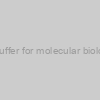 PIPES Buffer for molecular biology, 99% |
|
49159 |
Sisco Laboratories |
100 Gms |
EUR 26.03 |
|
|
|
Description: Part B |
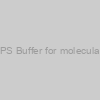 10X MOPS Buffer for molecular biology |
|
68078 |
Sisco Laboratories |
100 ml |
EUR 4.5 |
|
|
|
Description: Part B |
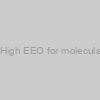 Agarose High EEO for molecular biology |
|
60645 |
Sisco Laboratories |
25 Gms |
EUR 13.8 |
|
|
|
Description: Part B |
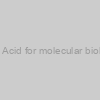 Jasmonic Acid for molecular biology, 95% |
|
79238 |
Sisco Laboratories |
25 Mg |
EUR 120.9 |
|
|
|
Description: Part B |
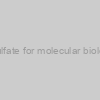 Protamine Sulfate for molecular biology, 90-110% |
|
78349 |
Sisco Laboratories |
1 Gms |
EUR 22.5 |
|
|
|
Description: Part B |
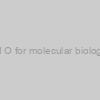 Oil Red O for molecular biology, 75% |
|
23576 |
Sisco Laboratories |
25 Gms |
EUR 5.33 |
|
|
|
Description: Part B |
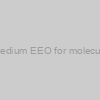 Agarose Medium EEO for molecular biology |
|
10423 |
Sisco Laboratories |
10 Gms |
EUR 6.75 |
|
|
|
Description: Part B |
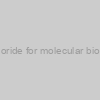 Sodium Chloride for molecular biology, 99.9% |
|
33205 |
Sisco Laboratories |
500 Gms |
EUR 4.52 |
|
|
|
Description: Part A |
 for molecular biology, 99.8%) Isopropanol (IPA) for molecular biology, 99.8% |
|
38445 |
Sisco Laboratories |
100 ml |
EUR 1.71 |
|
|
|
Description: Part A |
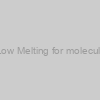 Agarose Low Melting for molecular biology |
|
32417 |
Sisco Laboratories |
5 Gms |
EUR 22.5 |
|
|
|
Description: Part B |
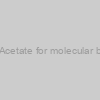 Ammonium Acetate for molecular biology, 98% |
|
37829 |
Sisco Laboratories |
100 Gms |
EUR 2.12 |
|
|
|
Description: Part A |
 for molecular biology, 99.9%) Acetonitrile (ACN) for molecular biology, 99.9% |
|
62006 |
Sisco Laboratories |
250 ml |
EUR 4.93 |
|
|
|
Description: Part A |
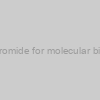 Ethidium Bromide for molecular biology, 95% |
|
93079 |
Sisco Laboratories |
1 Gms |
EUR 4.58 |
|
|
|
Description: Part A |
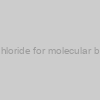 Ammonium Chloride for molecular biology, 99.5% |
|
16992 |
Sisco Laboratories |
500 Gms |
EUR 4.52 |
|
|
|
Description: Part A |
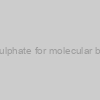 Ammonium Sulphate for molecular biology, 99.5% |
|
82126 |
Sisco Laboratories |
250 Gms |
EUR 4.93 |
|
|
|
Description: Part A |
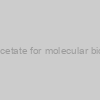 Potassium Acetate for molecular biology, 99.5% |
|
96248 |
Sisco Laboratories |
100 Gms |
EUR 2.74 |
|
|
|
Description: Part A |
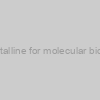 Phenol Crystalline for molecular biology, 99.5% |
|
17286 |
Sisco Laboratories |
100 Gms |
EUR 3.15 |
|
|
|
Description: Part A |
 Sodium Bicarbonate for molecular biology, 99.7% |
|
36328 |
Sisco Laboratories |
500 Gms |
EUR 5.47 |
|
|
|
Description: Part A |
 for molecular biology, 99.5%) Glycerol (Glycerine) for molecular biology, 99.5% |
|
62417 |
Sisco Laboratories |
100 ml |
EUR 2.05 |
|
|
|
Description: Part A |
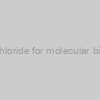 Potassium Chloride for molecular biology, 99.5% |
|
84984 |
Sisco Laboratories |
500 Gms |
EUR 6.16 |
|
|
|
Description: Part A |
 for molecular biology, 99.9%) Dichloromethane (DCM) for molecular biology, 99.9% |
|
41512 |
Sisco Laboratories |
250 ml |
EUR 3.22 |
|
|
|
Description: Part A |
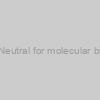 Acriflavine Neutral for molecular biology, 98% |
|
42428 |
Sisco Laboratories |
5 Gms |
EUR 3.15 |
|
|
|
Description: Part B |
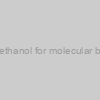 2-Mercaptoethanol for molecular biology, 99% |
|
83759 |
Sisco Laboratories |
100 ml |
EUR 5.27 |
|
|
|
Description: Part A |
 for molecular biology, 99.8%) Tetrahydrofuran (THF) for molecular biology, 99.8% |
|
92562 |
Sisco Laboratories |
250 ml |
EUR 3.28 |
|
|
|
Description: Part A |
 for molecular biology, 99%) Dithioerythritol (DTE) for molecular biology, 99% |
|
53384 |
Sisco Laboratories |
1 Gms |
EUR 9.53 |
|
|
|
Description: Part B |
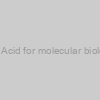 L-Ascorbic Acid for molecular biology, 99.7% |
|
14116 |
Sisco Laboratories |
25 Gms |
EUR 1.64 |
|
|
|
Description: Part A |
 HEPES Sodium Salt for molecular biology, 99% |
|
32225 |
Sisco Laboratories |
25 Gms |
EUR 11.85 |
|
|
|
Description: Part B |
 for molecular biology, 98%) meta-Topolin (mT) for molecular biology, 98% |
|
68913 |
Sisco Laboratories |
25 Mg |
EUR 17.48 |
|
|
|
Description: Part B |
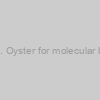 Glycogen ex. Oyster for molecular biology, 85% |
|
49740 |
Sisco Laboratories |
1 Gms |
EUR 7.5 |
|
|
|
Description: Part B |
 for molecular biology, 95%) Propidium Iodide (PI) for molecular biology, 95% |
|
11195 |
Sisco Laboratories |
10 Mg |
EUR 17.63 |
|
|
|
Description: Part B |
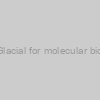 Acetic Acid Glacial for molecular biology, 99.9% |
|
59788 |
Sisco Laboratories |
100 ml |
EUR 3.56 |
|
|
|
Description: Part A |
 Acrylamide 3x cryst. for molecular biology, 99.9% |
|
61346 |
Sisco Laboratories |
100 Gms |
EUR 5.47 |
|
|
|
Description: Part A |
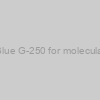 Brilliant Blue G-250 for molecular biology |
|
64222 |
Sisco Laboratories |
5 Gms |
EUR 4.65 |
|
|
|
Description: Part B |
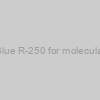 Brilliant Blue R-250 for molecular biology |
|
93473 |
Sisco Laboratories |
5 Gms |
EUR 4.35 |
|
|
|
Description: Part B |
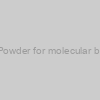 D-Sorbitol Powder for molecular biology, 98% |
|
99103 |
Sisco Laboratories |
500 Gms |
EUR 10.33 |
|
|
|
Description: Part A |
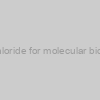 Acriflavine Hydrochloride for molecular biology, 98.5%-105% |
|
35188 |
Sisco Laboratories |
5 Gms |
EUR 4.05 |
|
|
|
Description: Part B |
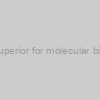 Tris Buffer Superior for molecular biology, 99.9% |
|
37969 |
Sisco Laboratories |
100 Gms |
EUR 7.59 |
|
|
|
Description: Part A |
 for molecular biology) Polysorbate 20 (Tween 20) for molecular biology |
|
65296 |
Sisco Laboratories |
100 Gms |
EUR 10.81 |
|
|
|
Description: Part A |
 Molecular Biology Grade Water for RT-PCR |
|
ML065-1.5ML |
EWC Diagnostics |
1 unit |
EUR 7.82 |
|
Description: Molecular Biology Grade Water for RT-PCR |
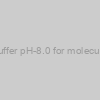 10X TE Buffer pH-8.0 for molecular biology |
|
51782 |
Sisco Laboratories |
100 ml |
EUR 9.45 |
|
|
|
Description: Part B |
 10X TAE Buffer pH-8.3 for molecular biology |
|
71989 |
Sisco Laboratories |
100 ml |
EUR 4.43 |
|
|
|
Description: Part B |
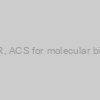 Tris Buffer AR, ACS for molecular biology, 99.9% |
|
71033 |
Sisco Laboratories |
100 Gms |
EUR 6.02 |
|
|
|
Description: Part A |
 10X TBE Buffer pH-8.3 for molecular biology |
|
83170 |
Sisco Laboratories |
200 ml |
EUR 4.95 |
|
|
|
Description: Part B |
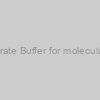 MES Monohydrate Buffer for molecular biology, 99% |
|
26854 |
Sisco Laboratories |
25 Gms |
EUR 11.03 |
|
|
|
Description: Part B |
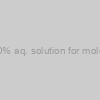 Acrylamide 40% aq. solution for molecular biology |
|
29787 |
Sisco Laboratories |
250 ml |
EUR 20.53 |
|
|
|
Description: Part A |
 for molecular biology, 99.5%) Glutathione Reduced (GSH) for molecular biology, 99.5% |
|
11514 |
Sisco Laboratories |
1 Gms |
EUR 5.55 |
|
|
|
Description: Part B |
 for molecular biology, 98%) DL-Dithiothreitol (DTT) for molecular biology, 98% |
|
17315 |
Sisco Laboratories |
1 Gms |
EUR 5.18 |
|
|
|
Description: Part B |
 Sodium Acetate Anhydrous for molecular biology, 99% |
|
22342 |
Sisco Laboratories |
250 Gms |
EUR 3.56 |
|
|
|
Description: Part A |
 for molecular biology, 99.8%) Dimethyl Sulphoxide (DMSO) for molecular biology, 99.8% |
|
24075 |
Sisco Laboratories |
100 ml |
EUR 6.02 |
|
|
|
Description: Part A |
 for molecular biology, 99.9%) Trifluoroacetic Acid (TFA) for molecular biology, 99.9% |
|
40801 |
Sisco Laboratories |
100 ml |
EUR 22.92 |
|
|
|
Description: Part A |
 for molecular biology, 99%) Ammonium Persulphate (APS) for molecular biology, 99% |
|
65553 |
Sisco Laboratories |
25 Gms |
EUR 1.64 |
|
|
|
Description: Part A |
 for molecular biology, 99.5%) Glutathione Oxidized (GSSG) for molecular biology, 99.5% |
|
22151 |
Sisco Laboratories |
250 Mg |
EUR 22.5 |
|
|
|
Description: Part B |
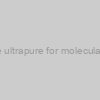 Cesium Chloride ultrapure for molecular biology, 99.9% |
|
32355 |
Sisco Laboratories |
25 Gms |
EUR 18 |
|
|
|
Description: Part B |
 Cesium Sulphate extrapure for molecular biology, 99.9% |
|
57455 |
Sisco Laboratories |
10 Gms |
EUR 7.5 |
|
|
|
Description: Part B |
 for molecular biology, 99%) Guanidine Thiocyanate (GTC) for molecular biology, 99% |
|
80272 |
Sisco Laboratories |
100 Gms |
EUR 5.47 |
|
|
|
Description: Part A |
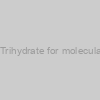 Sodium Acetate Trihydrate for molecular biology, 99.5% |
|
88035 |
Sisco Laboratories |
250 Gms |
EUR 2.33 |
|
|
|
Description: Part A |
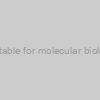 Pyridine, GlenBiol™, suitable for molecular biology with molecular sieve |
|
GS8780 |
Glentham Life Sciences |
2500ml |
EUR 239.63 |
 Pyridine, GlenBiol™, suitable for molecular biology with molecular sieve |
|
GS8780-2500 |
Glentham Life Sciences |
2500 |
EUR 249.8 |
|
|
 for molecular biology, 99%) Diethyl Pyrocarbonate (DEPC) for molecular biology, 99% |
|
46791 |
Sisco Laboratories |
5 ml |
EUR 9 |
|
|
|
Description: Part B |
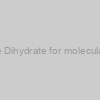 Calcium Chloride Dihydrate for molecular biology, 99.5% |
|
97080 |
Sisco Laboratories |
100 Gms |
EUR 2.12 |
|
|
|
Description: Part A |
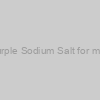 Bromocresol Purple Sodium Salt for molecular biology |
|
24836 |
Sisco Laboratories |
5 Gms |
EUR 2.05 |
|
|
|
Description: Part A |
 for molecular biology, 99.5%) Guanidine Hydrochloride (GHC) for molecular biology, 99.5% |
|
45539 |
Sisco Laboratories |
100 Gms |
EUR 4.79 |
|
|
|
Description: Part A |
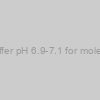 20X SSC Buffer pH 6.9-7.1 for molecular biology |
|
12590 |
Sisco Laboratories |
200 ml |
EUR 2.48 |
|
|
|
Description: Part B |
 for molecular biology) Polyethylene Glycol 8000 (PEG 8000) for molecular biology |
|
54866 |
Sisco Laboratories |
500 Gms |
EUR 11.97 |
|
|
|
Description: Part A |
 for molecular biology) 10X Tris Buffered Saline (TBS) for molecular biology |
|
83471 |
Sisco Laboratories |
500 ml |
EUR 14.7 |
|
|
|
Description: Part B |
 Magnesium Acetate Tetrahydrate for molecular biology, 99% |
|
50488 |
Sisco Laboratories |
100 Gms |
EUR 2.74 |
|
|
|
Description: Part A |
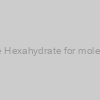 Magnesium Chloride Hexahydrate for molecular biology, 99.5% |
|
91417 |
Sisco Laboratories |
250 Gms |
EUR 4.45 |
|
|
|
Description: Part A |
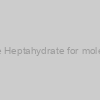 Magnesium Sulphate Heptahydrate for molecular biology, 99.5% |
|
74440 |
Sisco Laboratories |
500 Gms |
EUR 6.16 |
|
|
|
Description: Part A |
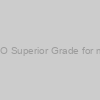 Agarose Low EEO Superior Grade for molecular biology |
|
23287 |
Sisco Laboratories |
10 Gms |
EUR 6 |
|
|
|
Description: Part B |
 for molecular biology, 99%) L-Lysine Monohydrate (base) for molecular biology, 99% |
|
45976 |
Sisco Laboratories |
25 Gms |
EUR 37.63 |
|
|
|
Description: Part A |
 for molecular biology, 99%) Tris Hydrochloride (Tris HCl) for molecular biology, 99% |
|
89781 |
Sisco Laboratories |
100 Gms |
EUR 9.37 |
|
|
|
Description: Part A |
 Cesium Chloride extrapure AR for molecular biology, 99.9% |
|
22966 |
Sisco Laboratories |
25 Gms |
EUR 14.63 |
|
|
|
Description: Part B |
 for molecular biology, 99.9%) N,N-Dimethylformamide (DMF) for molecular biology, 99.9% |
|
24017 |
Sisco Laboratories |
100 ml |
EUR 3.08 |
|
|
|
Description: Part A |
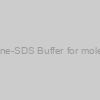 10X Tris-Tricine-SDS Buffer for molecular biology |
|
37852 |
Sisco Laboratories |
500 ml |
EUR 9.08 |
|
|
|
Description: Part B |
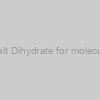 EDTA Disodium Salt Dihydrate for molecular biology, 99.5% |
|
43272 |
Sisco Laboratories |
100 Gms |
EUR 2.26 |
|
|
|
Description: Part A |
 10X Tris-Glycine-SDS Buffer for molecular biology |
|
57806 |
Sisco Laboratories |
200 ml |
EUR 3.6 |
|
|
|
Description: Part B |
) DTT (Molecular Biology Grade) |
|
CE131 |
GeneOn |
5 g |
EUR 93.6 |
) DTT (Molecular Biology Grade) |
|
CE132 |
GeneOn |
10 g |
EUR 133.2 |
) DTT (Molecular Biology Grade) |
|
CE133 |
GeneOn |
25 g |
EUR 243.6 |
) NAD (Molecular Biology Grade) |
|
CE196 |
GeneOn |
1 g |
EUR 72 |
) NAD (Molecular Biology Grade) |
|
CE197 |
GeneOn |
5 g |
EUR 165.6 |
) NBT (Molecular Biology Grade) |
|
CE209 |
GeneOn |
1 g |
EUR 123.6 |
) NBT (Molecular Biology Grade) |
|
CE210 |
GeneOn |
5 g |
EUR 360 |
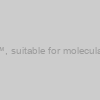 Dimethylformamide, GlenBiol™, suitable for molecular biology with molecular sieve |
|
GS3406 |
Glentham Life Sciences |
2500ml |
EUR 111.53 |
 Dimethylformamide, GlenBiol™, suitable for molecular biology with molecular sieve |
|
GS3406-2500 |
Glentham Life Sciences |
2500 |
EUR 116.2 |
|
|
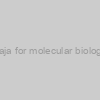 Saponin ex. Quillaja for molecular biology, 9% Sapogenin |
|
80967 |
Sisco Laboratories |
25 Gms |
EUR 45 |
|
|
|
Description: Part B |
 for molecular biology) Chloroform : Isoamyl Alcohol (24:1) for molecular biology |
|
85563 |
Sisco Laboratories |
100 ml |
EUR 8.48 |
|
|
|
Description: Part B |
 for molecular biology) 1X Phosphate Buffered Saline (PBS) for molecular biology |
|
95131 |
Sisco Laboratories |
100 ml |
EUR 3.98 |
|
|
|
Description: Part B |
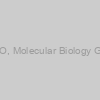 DMSO, Molecular Biology Grade |
|
40470006-1 |
Glycomatrix |
100 mL |
EUR 88.18 |
 DMSO, Molecular Biology Grade |
|
40470006-2 |
Glycomatrix |
250 mL |
EUR 150.19 |
 DMSO, Molecular Biology Grade |
|
40470006-3 |
Glycomatrix |
500 mL |
EUR 279.26 |
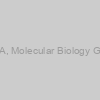 EGTA, Molecular Biology Grade |
|
40500028-2 |
Glycomatrix |
50 g |
EUR 106.43 |
 EGTA, Molecular Biology Grade |
|
40500028-3 |
Glycomatrix |
100 g |
EUR 177.58 |
 EGTA, Molecular Biology Grade |
|
40500028-4 |
Glycomatrix |
500 g |
EUR 603.19 |
 EGTA, Molecular Biology Grade |
|
40500028-5 |
Glycomatrix |
1 kg |
EUR 912.98 |
The sensitivity of the Macrolide-R/MG ELITe MGB package was considerably greater than that of the Allplex MG & AziR package. The scientific specificity for resistance detection of the three kits was 97.4-97.6%. The random-access chance, enter pattern quantity, and DNA extract availability for detecting resistance to different antibiotics may affect the choice of a industrial package by diagnostic laboratories.


